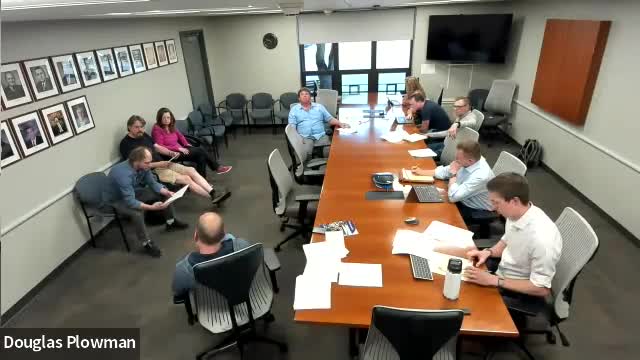Monona residents voice opposition to variance request for 540521 Trail home construction
May 16, 2025 | Monona, Dane County, Wisconsin
This article was created by AI summarizing key points discussed. AI makes mistakes, so for full details and context, please refer to the video of the full meeting. Please report any errors so we can fix them. Report an error »

In the heart of Monona, Wisconsin, a recent Zoning Board of Appeals meeting brought forth passionate discussions surrounding a proposed home construction that has stirred the community. As residents gathered under the fluorescent lights of city hall, the air was thick with concern over the implications of a variance request that could alter the neighborhood's landscape.
The focal point of the debate was a new build spanning two lots, which has raised eyebrows due to its proximity to a sewer line and the potential for future maintenance issues. One resident, Jeff Ryan, articulated his apprehensions, stating that the design of the home should have inherently accommodated the necessary setbacks, particularly given its size and the absence of unique physical limitations on the property. “This really is not a hardship in my opinion,” he asserted, emphasizing that the home already utilizes the full extent of the property limits.
Ryan's comments echoed a broader sentiment among neighbors who fear that approving this variance could set a troubling precedent for future developments. He warned that allowing construction closer to the sewer line could lead to complications down the road, not just for the current homeowners but for the entire neighborhood. “This project should not set any precedent,” he cautioned, urging the board to consider the long-term implications of their decision.
The discussion also touched on the architectural aspects of the home, particularly its height. Concerns were raised about the building's design, which some argued could exceed the city’s height restrictions. One resident pointed out that the proposed roof structure could push the height to nearly 45 feet, significantly towering over neighboring homes. “It sticks out like a sore thumb,” he remarked, questioning whether the intent of zoning laws was being undermined.
As the meeting progressed, board members deliberated on the merits of the variance request. They grappled with the definitions of hardship and unique physical limitations, recognizing that a desire for a larger deck does not constitute a valid reason for variance approval. The board acknowledged the importance of adhering to zoning restrictions designed to protect the lake and maintain the character of the community.
In closing, the board decided to weigh the concerns raised by residents against the applicant's request. The outcome of this meeting could shape the future of construction in Monona, as the community watches closely to see if their voices will influence the decision-making process. As the lights dimmed and the meeting adjourned, the lingering question remained: how will the city balance growth with the preservation of its cherished neighborhood character?
The focal point of the debate was a new build spanning two lots, which has raised eyebrows due to its proximity to a sewer line and the potential for future maintenance issues. One resident, Jeff Ryan, articulated his apprehensions, stating that the design of the home should have inherently accommodated the necessary setbacks, particularly given its size and the absence of unique physical limitations on the property. “This really is not a hardship in my opinion,” he asserted, emphasizing that the home already utilizes the full extent of the property limits.
Ryan's comments echoed a broader sentiment among neighbors who fear that approving this variance could set a troubling precedent for future developments. He warned that allowing construction closer to the sewer line could lead to complications down the road, not just for the current homeowners but for the entire neighborhood. “This project should not set any precedent,” he cautioned, urging the board to consider the long-term implications of their decision.
The discussion also touched on the architectural aspects of the home, particularly its height. Concerns were raised about the building's design, which some argued could exceed the city’s height restrictions. One resident pointed out that the proposed roof structure could push the height to nearly 45 feet, significantly towering over neighboring homes. “It sticks out like a sore thumb,” he remarked, questioning whether the intent of zoning laws was being undermined.
As the meeting progressed, board members deliberated on the merits of the variance request. They grappled with the definitions of hardship and unique physical limitations, recognizing that a desire for a larger deck does not constitute a valid reason for variance approval. The board acknowledged the importance of adhering to zoning restrictions designed to protect the lake and maintain the character of the community.
In closing, the board decided to weigh the concerns raised by residents against the applicant's request. The outcome of this meeting could shape the future of construction in Monona, as the community watches closely to see if their voices will influence the decision-making process. As the lights dimmed and the meeting adjourned, the lingering question remained: how will the city balance growth with the preservation of its cherished neighborhood character?
View full meeting
This article is based on a recent meeting—watch the full video and explore the complete transcript for deeper insights into the discussion.
View full meeting
